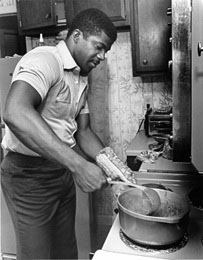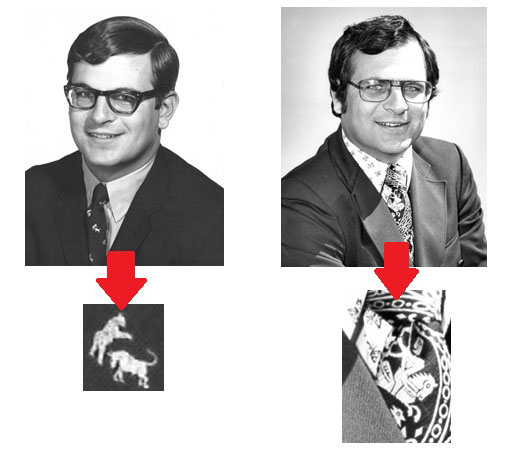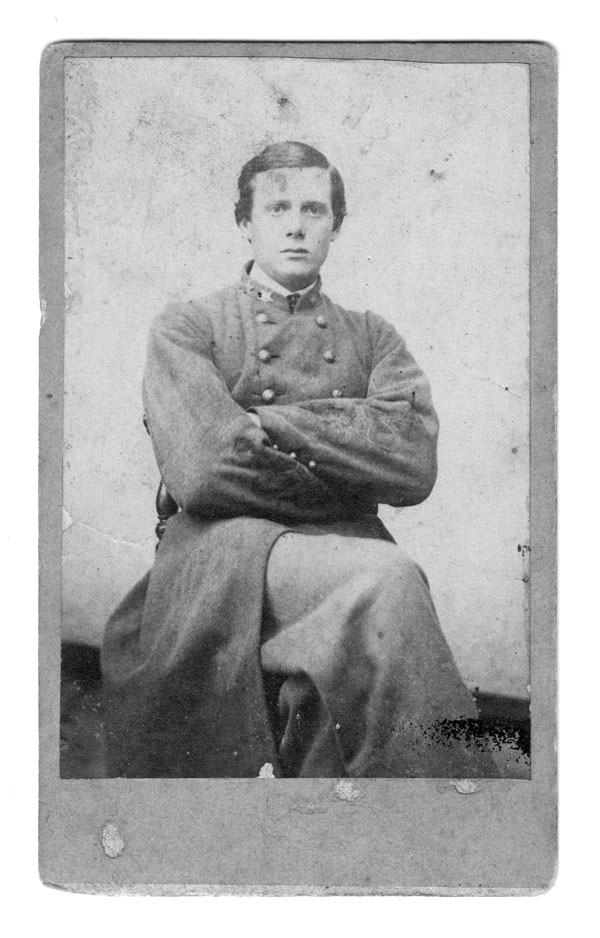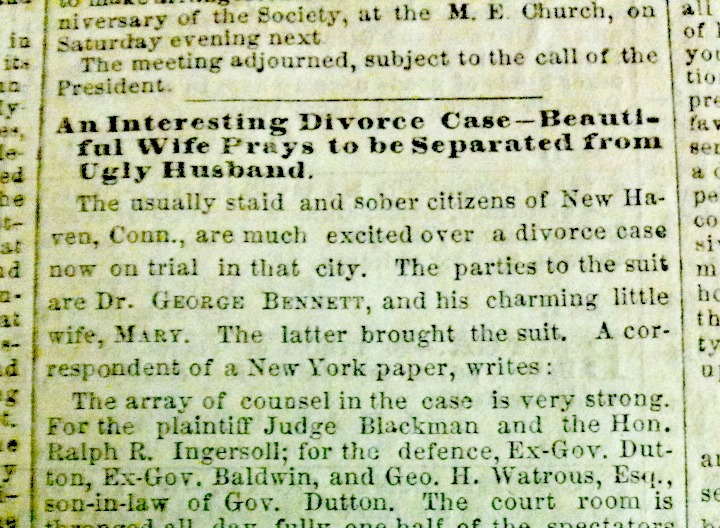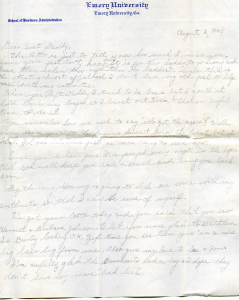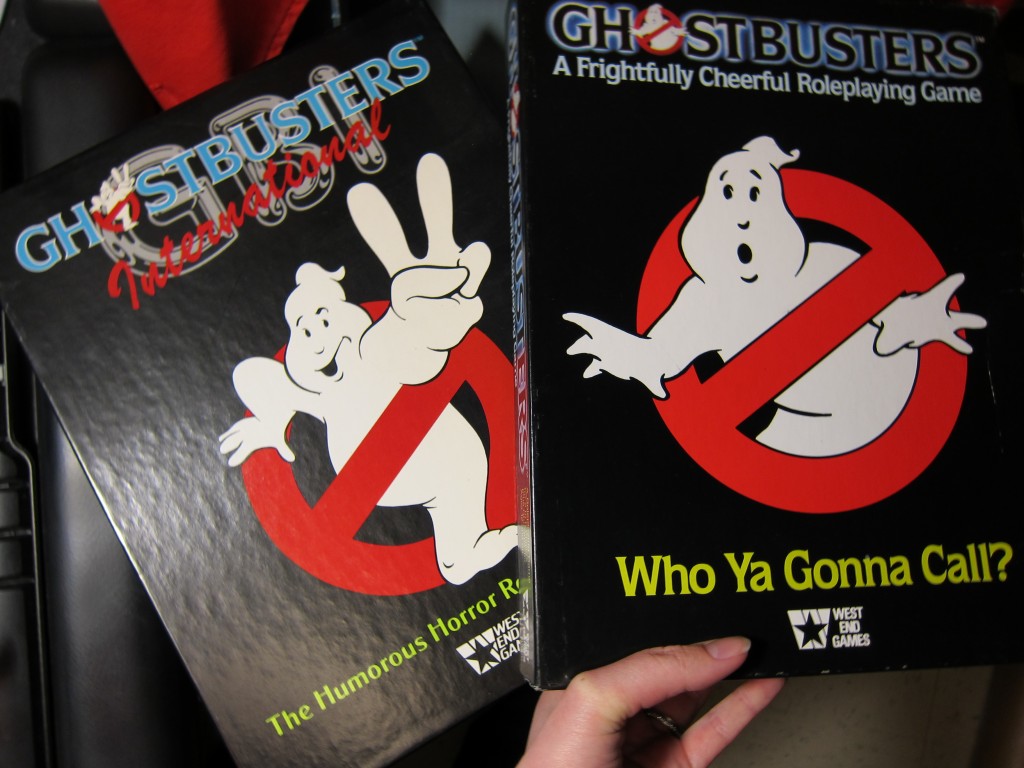Or, A Sartorial Look at the Sports Information Office Records
For the last two months, I have been processing a large accession of materials from the Duke Sports Information Office. The vast majority of the accession consists of photographs and negatives from Duke football teams, served with a side of basketball and seasoned with photos of other teams and individual athletes. As you can imagine, I have gone through many generations of athletes, coaches, and of course, fashion trends. This post is dedicated to a few assistant football coaches who weren’t afraid to show add some fashion flair to their official photos.
Assistant Football Coach John Guy shows us his kitchen style. The no-apron look was very in that season.
I should also say outright: I love sports, particularly college athletics. I did my undergraduate work at a football school. I have free t-shirts from at least a dozen other athletic teams at my undergrad school. My graduate degrees are from . . . well, another school in the Triangle with a basketball team. As a result, processing this collection has been a lot of fun for me.
Assistant Football Coach David Holton is a man who is not afraid of mixing patterns and textures in his outfits. Stripes, plaid, and corduroy: very boho-chic.
During my time processing the Sports Information Collection, I’ve noticed something about the coaching staff photos: although the head coaches by and large have fairly tame outfits, the assistant coaches most certainly do not. Perhaps they want to ensure that players can see them on the sideline/courtside? Maybe they just love mythologically-inspired ties? We’ll probably never know for sure!
The photos above showcase the ties of Freshman Football Coach John Gutekunst. I’ve taken the liberty of calling out the patterns on both so that you can see in better detail. Clearly, Gutekunst stayed with the animal theme over the course of his career—by the later picture, he even ventured to wear a butterfly shirt with the mythological tie!
To close out this post, I think we should all tip our hats to the adventurous styles of these assistant football coaches. They have showed us how to look cool on the sidelines, in the kitchen, and in your formal yearbook photos. Keep up the great work!
Now tell me: who’s your style icon? Are you channeling Guy’s daring “no-apron” look, Holton’s mixed patterns and textures, or Gutekunst’s animal-themed accessories?
Post contributed by Maureen McCormick, Drill Intern for the Duke University Archives.


